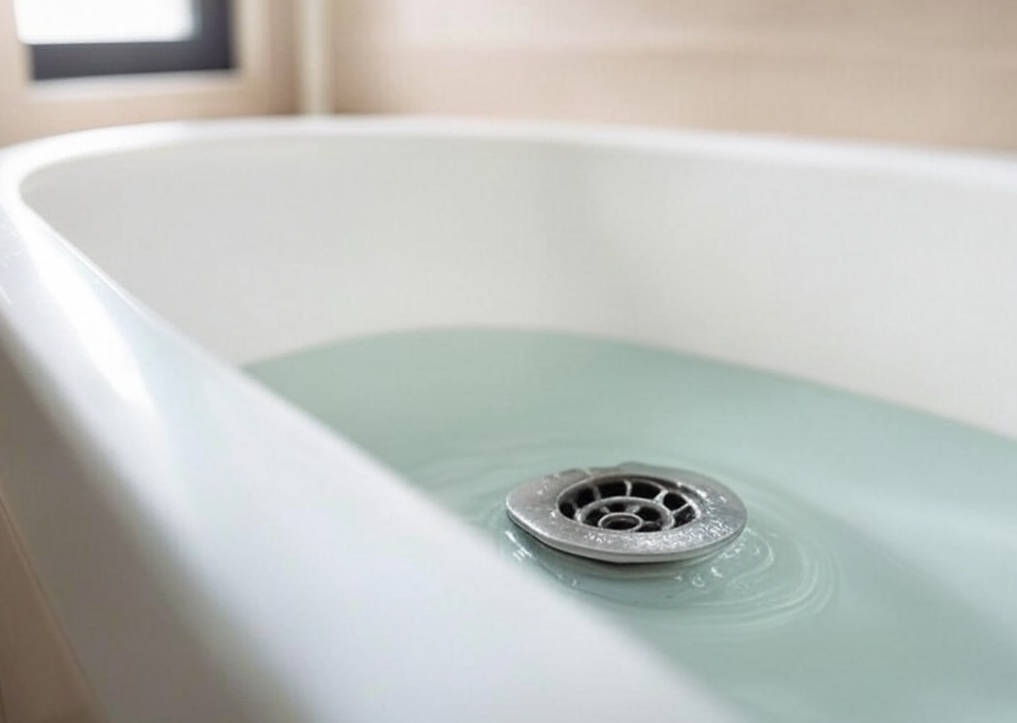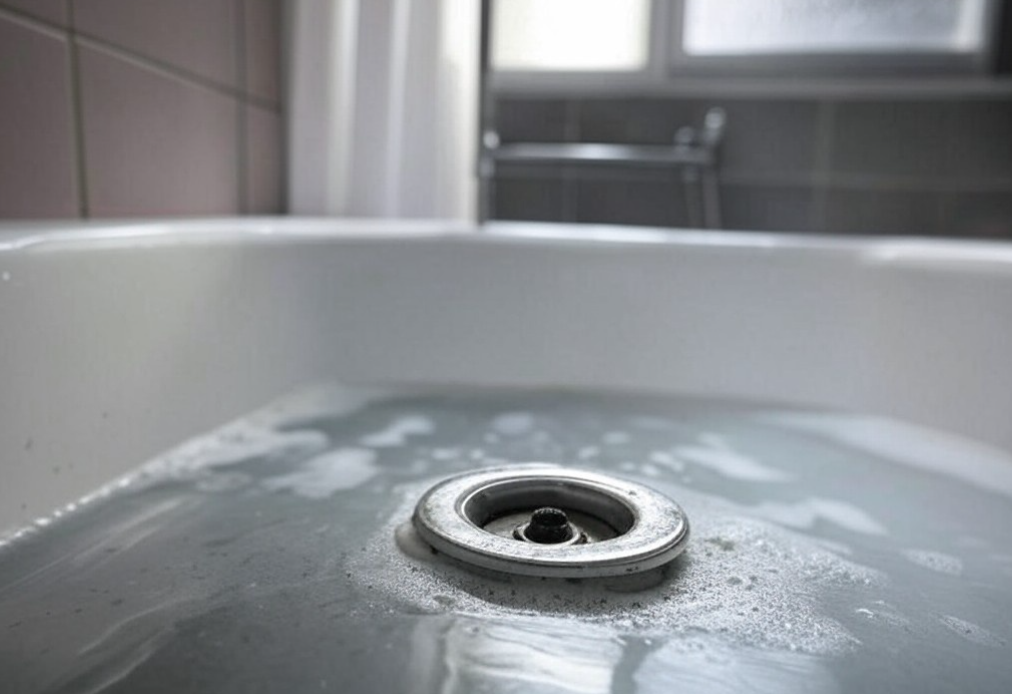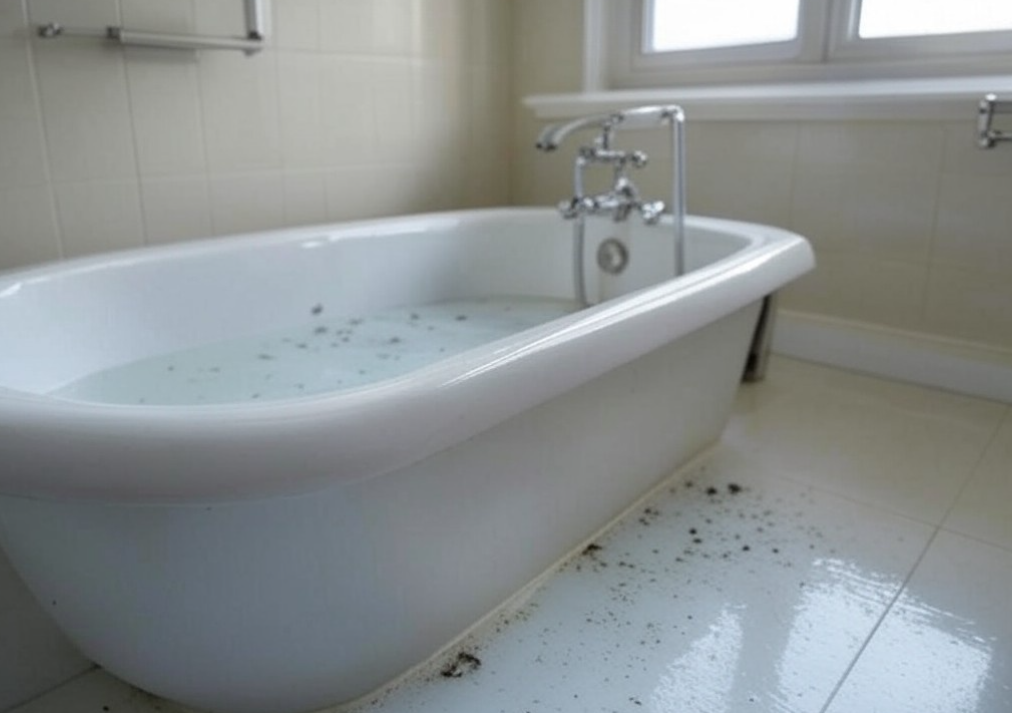Bathroom Tub Clogged? 5 Easy Steps to Fix It Fast
Bathroom tub clogged? You’re not alone. Bathtub issues are one of the most common plumbing problems homeowners face. Luckily, there are simple steps you can take to resolve them.
- Common Cause: Hair buildup and soap scum.
- Try DIY: Use a plunger or a drain snake.
- If Problem Persists: Consult a professional plumber.
Stepping into a shower and finding yourself ankle-deep in water can be a frustrating way to start the day. Bathtub blockages are not just minor inconveniences but can often lead to bigger plumbing issues if ignored. Even a small amount of hair and soap scum can block drainage, causing water backup and increasing the risk of mold growth. Addressing these clogs promptly is vital for maintaining a smooth-flowing plumbing system.
In this article from Integrity Services & Plumbing, we’ll guide you through quick and effective solutions to keep your bathtub and plumbing in tip-top shape, saving you time and preventing costly repairs. So, take a deep breath and let’s clear those drains!
Common Causes of a Bathroom Tub Clogged
Hair Buildup
Hair is one of the top culprits when it comes to a bathroom tub clogged. Every time you shower, loose strands of hair accumulate and form tangled clumps. These clumps get caught in the drain, trapping soap and other debris. Over time, this creates a stubborn blockage that slows water flow considerably.
Soap Scum
Soap might clean your body, but it can dirty your pipes. When soap mixes with the minerals in water, it forms a hard residue known as soap scum. This sticky substance clings to the walls of your pipes, narrowing the passageway and making it easier for other debris to get stuck. Regular cleaning can help minimize this buildup.
Debris
Debris can also contribute to a clogged bathtub. Small items like bath toys or jewelry might accidentally find their way down the drain. Even tiny particles like dirt or sand from a day at the beach can settle in the pipes, adding to the blockage. Using a mesh drain trap can catch these items before they cause problems.
Damaged Pipes
Damaged pipes are a less common, but significant, cause of tub clogs. Cracks or breaks in the pipes can lead to misaligned drainage systems. This not only hinders water flow but may also allow dirt and roots to enter the pipes, worsening the blockage. If you suspect damaged pipes, it’s best to call a professional plumber to assess and repair the problem.

Understanding these common causes can help you prevent clogs before they become major issues. In the next section, we’ll explore some DIY methods to tackle these pesky blockages and keep your bathtub running smoothly.
DIY Methods to Unclog Your Bathtub
When faced with a bathroom tub clogged, you don’t always need to call in the pros right away. Sometimes, a few simple DIY methods can do the trick. Let’s explore some effective techniques you can try at home.
Baking Soda and Vinegar
This classic combo is a powerful natural remedy for clogs. Here’s how it works:
- Pour one cup of baking soda down the drain.
- Follow with two cups of vinegar. You’ll notice fizzing—this is the reaction that helps break down the clog.
- Let it sit for about 15 minutes to allow the mixture to work its magic.
- Flush with boiling water to clear out any remaining debris.
This method is eco-friendly and safe for most pipes.
Boiling Water
Boiling water is one of the simplest solutions for minor clogs, especially those caused by soap scum and grease.
- Boil a kettle of water.
- Carefully pour it down the drain in two to three stages, allowing it to work through the blockage.
The heat can help dissolve soap and grease, restoring the flow.
Plunger
A plunger isn’t just for toilets; it can be a handy tool for unclogging tubs too.
- Fill the tub with enough water to cover the plunger’s rubber cup.
- Place the plunger over the drain and give it several firm plunges.
- Check the drainage—if it’s improved, you might have dislodged the clog.
This method is effective for clogs caused by hair and small debris.
Drain Snake
For stubborn clogs, a drain snake is your best bet. It’s designed to reach deep into the pipes and break up blockages.
- Insert the snake into the drain until you feel resistance.
- Rotate the snake to catch the clog and pull it out.
- Run water to ensure the blockage is cleared.
A drain snake is particularly useful for hair clogs, which are common in bathroom tubs.
These DIY methods can help you tackle clogs efficiently, saving both time and money. But remember, if the blockage persists, it might be time to call in the experts to avoid any potential damage to your plumbing system. For professional assistance, visit Integrity Services & Plumbing.
Next up, we’ll guide you through a step-by-step process to ensure your bathtub remains clog-free.
Step-by-Step Guide to Unclogging Your Tub
When dealing with a bathroom tub clogged beyond what simple DIY methods can handle, it’s time to roll up your sleeves and get hands-on. Here’s a step-by-step guide to help you unclog your tub effectively.
Remove the Stopper
First, you’ll want to remove the tub stopper. This is where a lot of hair and debris tend to accumulate, causing blockages.
- Lift the stopper out of the drain. Some stoppers twist off, while others may require unscrewing.
- Inspect and clean the stopper to remove any visible hair or gunk.
Removing and cleaning the stopper regularly can prevent clogs from forming in the first place.
Clean the Strainer
Next, focus on the strainer, which catches debris before it enters the drain.
- Remove the strainer by unscrewing it or lifting it out, depending on the type.
- Clean it thoroughly with warm, soapy water. Use a brush for stubborn grime.
- Reinstall the strainer securely to keep it functioning properly.
Keeping the strainer clean helps ensure that large debris does not cause blockages.
Manual Removal
Sometimes, clogs are close enough to the surface that you can manually remove them.
- Wear gloves for hygiene and safety.
- Use a wire hanger or a similar tool to fish out hair and debris from the drain.
- Dispose of the debris properly to prevent it from entering the drain again.
Manual removal is a straightforward way to tackle clogs caused by hair and small objects.
Plunging Technique
If manual removal doesn’t fully clear the clog, a plunger can apply the necessary force to dislodge it.
- Seal the overflow drain with duct tape to maximize suction.
- Fill the tub with a few inches of hot water to improve the plunging effect.
- Position the plunger over the drain, ensuring a tight seal.
- Perform quick, forceful strokes about 5 to 6 times.
- Break the seal and check for debris.
Plunging is particularly effective for clogs caused by soap scum and small debris.

If your tub is still not draining after these steps, it might be time to consider professional help. Persistent clogs can indicate bigger issues that require expert attention.
Stay tuned as we explore preventative measures to keep your bathtub running smoothly and avoid future clogs.
Preventative Measures to Avoid Future Clogs
Keeping your bathtub drain clear is easier than you might think. Implementing a few simple habits can save you from dealing with a bathroom tub clogged with hair, soap scum, and other debris. Here’s how to keep things flowing smoothly:
Mesh Drain Trap
A mesh drain trap is your first line of defense against clogs. It catches hair and debris before they enter the drain.
- Install a mesh drain trap over your bathtub drain.
- Clean it regularly—just lift it out and dispose of the trapped debris.
- Replace it if it becomes damaged or worn out.
Using a mesh drain trap is an easy and affordable way to prevent clogs.
Regular Maintenance
Routine maintenance can make a big difference in preventing plumbing issues.
- Inspect your drain monthly for signs of buildup or blockages.
- Use natural cleaning solutions, like baking soda and vinegar, to keep the drain clear.
- Flush the drain with hot water weekly to help dissolve soap scum and grease.
Regular maintenance keeps your plumbing system healthy and reduces the risk of expensive repairs.
Hair Brushing
Hair is one of the main culprits of bathtub clogs. A simple habit can help minimize this issue.
- Brush your hair before showering or bathing to remove loose strands.
- Encourage family members to do the same, especially those with long hair.
This small step can significantly reduce the amount of hair that ends up in your drain.
Monthly Cleaning
Set a schedule for a more thorough cleaning session each month.
- Remove and clean the stopper and strainer to eliminate any hidden buildup.
- Use a drain snake occasionally to clear minor clogs before they become major problems.
Monthly cleaning helps maintain optimal water flow and prevents stubborn clogs.
Incorporate these preventative steps to enjoy a hassle-free bathing experience. Next, we’ll address some frequently asked questions about bathtub clogs to further improve your plumbing knowledge.
Frequently Asked Questions about Bathtub Clogs
How do you unclog a bathtub with standing water?
Dealing with a bathtub full of standing water can be frustrating. The first step is to try a plunger. Create a tight seal over the drain and use quick, forceful strokes to dislodge the clog.
If that doesn’t work, a drain snake might be your next best bet. It can reach deeper into the pipes to remove stubborn blockages.
For those who prefer chemical solutions, consider using a gel-based drain cleaner designed to cut through standing water and dissolve clogs caused by hair and soap scum. However, use it cautiously to avoid potential pipe damage.
Why is my bathtub not draining at all?
A completely blocked tub is often due to a combination of hair, soap scum, and even bath bombs. These items can form a sticky residue that clogs your pipes.
Soap scum and hair are notorious for creating tough blockages. Bath bombs can add to the problem due to their oils and undissolved particles.
To address this, remove the rubber stopper and clean out any visible debris. A mixture of baking soda and vinegar can also help break down the clog. Pour a cup of baking soda followed by a cup of vinegar down the drain, and let it sit for 15 minutes before flushing with hot water.
How do you unclog a slow draining bathtub?
A slow drain often indicates a partial clog. Start with a simple solution of baking soda and vinegar. This natural method can help clear minor blockages and deodorize your pipes.
For an extra boost, add dish soap to the mix. The soap can help dissolve grease and oils that contribute to the clog.
After using these solutions, flush the drain with boiling water to clear any remaining residue. If the problem persists, a plunger or drain snake may be necessary to fully clear the blockage.
Understanding these common issues and solutions will better equip you to handle a bathroom tub clogged with ease. Now, let’s explore more about how Integrity Services & Plumbing can assist with expert solutions and a commitment to excellence.
Conclusion
When it comes to tackling a bathroom tub clogged, Integrity Services & Plumbing stands ready with expert solutions and a steadfast commitment to excellence. As a family-owned business in the Rio Grande Valley, they understand the importance of reliable plumbing services for both residential and commercial needs.
Their team of licensed plumbers is equipped to handle everything from stubborn clogs to complex plumbing repairs. With a focus on preventing plumbing headaches before they start, Integrity Services & Plumbing offers not only immediate solutions but also long-term maintenance advice.

Whether it’s a simple clog or a more serious plumbing issue, their dedication to quality and customer satisfaction ensures that your plumbing woes are resolved efficiently and effectively. They provide a peace of mind that your plumbing system is in capable hands, allowing you to focus on what truly matters.
For more information on how Integrity Services & Plumbing can help you, visit their services page. Let their expertise keep your plumbing running smoothly.

